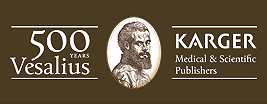From our advisory board members:
Translated by Daniel H. Garrison:
Vesalius: The China Root Epistle: A New Translation and Critical Edition.
By Sachiko Kusukawa:
By Vivian Nutton:
Ancient Medicine (Sciences of Antiquity Series).
Vesalius Revised. His Annotations to the 1555 Fabrica.
Medical History 20012;56:415443 (DOI 10.1017/mdh.2012.26).
By Hubert Steinke:
Medical Correspondence in Early Modern Europe. An Introduction. Gesnerus 2004;61(3–4):139–160.
Other background reading on Vesalius, anatomy and related topics:
- Vesalius A: Historical Anatomies on the Web: De corporis humani fabrica libri septem via the US National Library of Medicine.
- Vesalius A: De corporis humani fabrica libri septem (complete facsimile) via the Posner Memorial Collection at Carnegie Mellon University.
- Biesbrouck M: Andreas Vesalius: Site covering the life and works of Andreas Vesalius, the father of anatomy. Includes a recently updated bibliography. Content in English and Dutch.
- Lynn M: Wonders & Marvels: Pipes, Reins, & the Cerebral Winepress: Mechanical Metaphor in Vesalius’ Fabrica. 2012.
- Popova M: Brain Pickings: 100 Diagrams that Changed the World. 2012.
- Kieffer J: Buzz Patrol: 8 Geeky Anatomical Representations For Science Nerds To Relish and Mustard. 2012.
- Medical Illustration: Art in Medical Education.
Heart Views 2011;12:83–91 (DOI 10.4103/1995-705X.86023)
- Animated Anatomies: The Human Body in Anatomical Texts from the 16th to 21st Centuries.
The website features numerous images, videos, descriptions and other information stemming from a 2011 exhibition by Duke University's Duke Libraries exploring anatomical flap books.
- Codex 99: De Humani Corporis Fabrica. 2009.
Codex 99 is a website about the history of the visual arts and graphic design.
- Hayes B: The Anatomist: A True Story of Gray's Anatomy. 2008.
- Vesalius’ Fabrica: The Marriage of Art and Anatomy
Arch Facial Plast Surg 2001;3(3):220–221 (DOI 10.1001/archfaci.3.3.220)
- Der anatomische Fingerzeig aus Basel, Neue Zürcher Zeitung, 10. Juni 2006
- Michael Stolberg: Die Basler Universitätsanatomie in der Frühen Neuzeit
